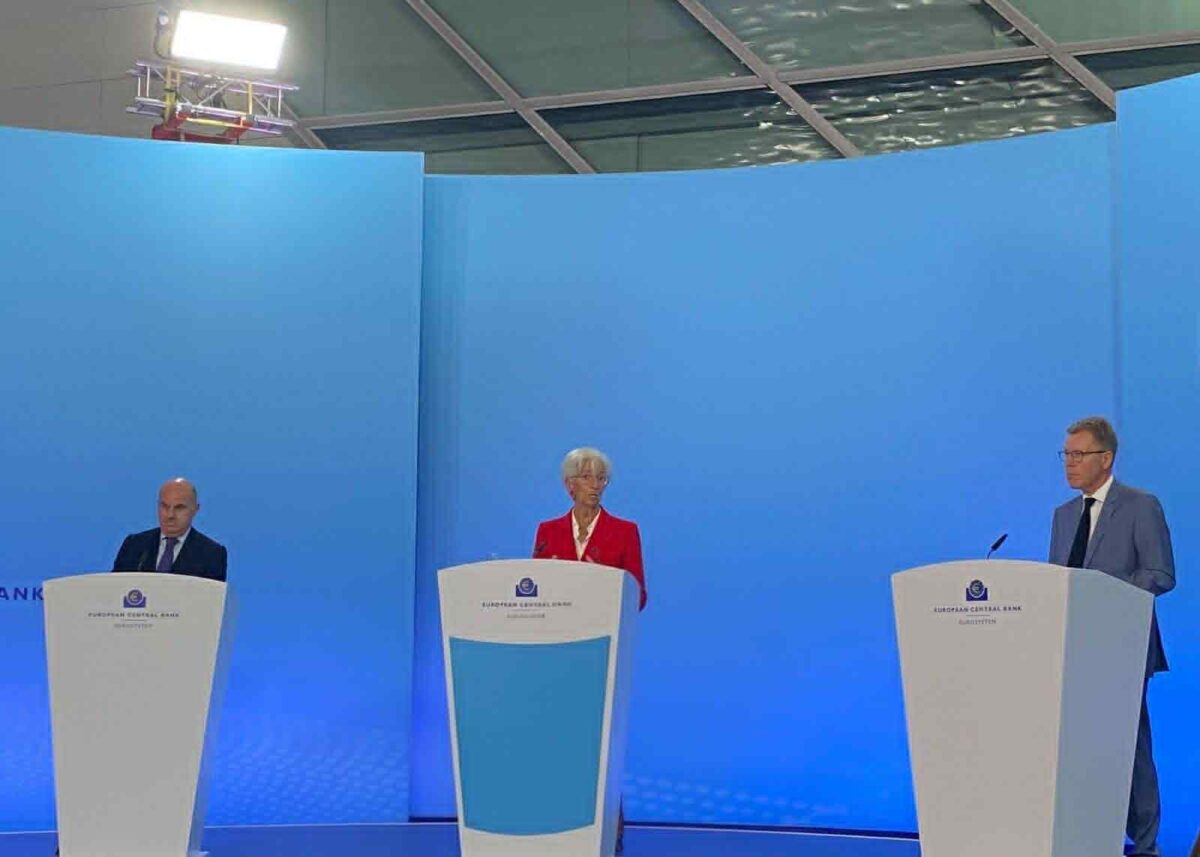The European Central Bank (ECB) has announced a 25 basis point reduction across its three key interest rates, marking a significant shift in monetary policy as inflation trends closer to the bank’s medium-term target of two per cent.
With today’s rate cuts, the ECB is well-positioned to navigate the uncertainty brought about by various geopolitical tensions, said European Central Bank President Christine Lagarde during Thursday’s press conference.

Effective 11th June 2025, the deposit facility rate – the ECB’s primary tool for steering monetary policy – will be reduced to two per cent, while the main refinancing operations rate will fall to 2.15 per cent and the marginal lending facility to 2.40 per cent.
The Governing Council’s decision is driven by its updated assessment of the inflation outlook, underlying inflation dynamics, and the strength of monetary policy transmission. Headline inflation is now forecast to average two per cent in 2025, 1.6 per cent in 2026, and return to two per cent in 2027.
These revised projections, down by 0.3 percentage points for both 2025 and 2026 compared to March, are largely attributed to lower energy price assumptions and a stronger euro. “I would not exclude the 0.3 number being raised upwards,” she added.
Core inflation, excluding food and energy, is expected to average 2.4 per cent in 2025 and ease to 1.9 per cent in 2026 and 2027, remaining broadly stable since the March forecast.
On the growth front, the ECB projects real GDP growth to average 0.9 per cent in 2025, 1.1 per cent in 2026, and 1.3 per cent in 2027. While first-quarter growth in 2025 exceeded expectations, weaker outlooks for the rest of the year balanced out the projection. Ongoing trade policy uncertainty is expected to weigh on investment and exports in the short term. However, increased public spending on infrastructure and defence, combined with resilient labour markets and rising real incomes, should underpin economic growth over the medium term.
The ECB also issued a warning that further escalation of trade tensions could drag both inflation and growth below the baseline projections. Conversely, a resolution of trade disputes could lead to marginally higher inflation and stronger economic expansion.
Wage growth remains elevated but is visibly moderating, and profit margins are cushioning some of its inflationary impact. Market volatility seen in April, stemming from trade-related uncertainty, has since subsided, easing concerns about financing conditions tightening.
The ECB emphasised that it remains committed to ensuring inflation stabilises at the two per cent target sustainably. It reaffirmed a data-driven, meeting-by-meeting approach to future rate decisions, explicitly stating it is not pre-committing to a specific rate path.
On asset purchases, the ECB confirmed that both the Asset Purchase Programme (APP) and the Pandemic Emergency Purchase Programme (PEPP) portfolios continue to decline at a steady pace, with reinvestments of maturing securities having ceased.
The Governing Council reiterated its readiness to adjust all policy tools within its mandate to maintain price stability and preserve smooth monetary transmission across the euro area. The Transmission Protection Instrument remains available as a backstop against disorderly market dynamics that may threaten this objective.
This rate cut marks the ECB’s first in the current cycle and reflects growing confidence that the eurozone is making progress in bringing inflation under control, even as economic risks remain.
Finally, asked about the speculation that Ms Lagarde will leave the ECB to join the World Economic Forum, she said that she is determined to finish her term: “I can very firmly tell you that I have always been, and I am, fully determined to deliver on my mission, and I’m determined to complete my term. Period.”
Later, when a journalist asked why she had chosen to wear her ‘in charge’ necklace – a subtle nod to departure rumors – she replied with a smile, “just in case of doubt.”
Fertiliser sales in Malta continue to decline, NSO data shows
Despite lower sales, Maltese farmers still applied almost the same amount to their fields
Malta to host World Travel & Tourism Council Global Summit in 2026
The summit brings together ministers, key industry players, destination management organisations and international media
ChatGPT launches in-app shopping for US users
While this feature is limited to the US market, it marks a significant shift in how people will shop






